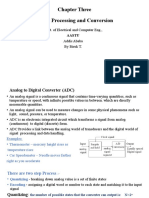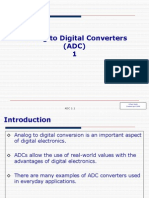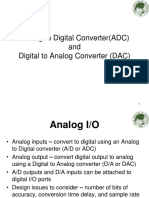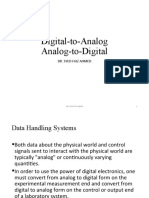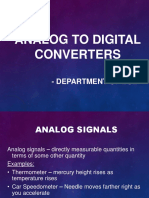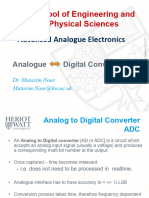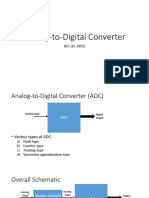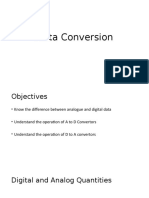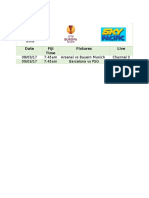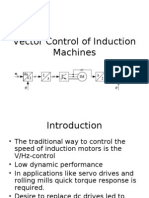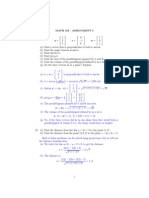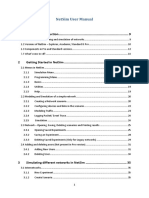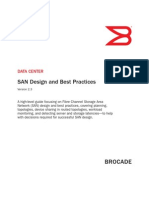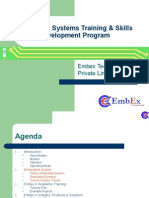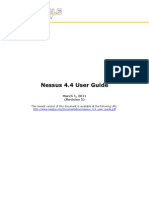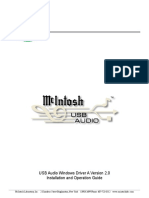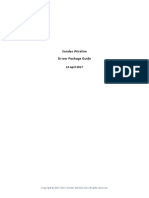Analog and Digital Interfacing
BJ Furman
Spring, 1999
DAC & ADC
Digital-to-Analog Conversion (DAC)
Converts a binary word from computer to a scaled
analog voltage
Used for controlling systems that require an analog
input.
DC servo motor
Resistive heater
Analog-to-Digital Conversion (ADC)
Converts a continuous analog voltage into discrete
binary values
Used to translate continuous physical phenomena into a
language the computer understands.
�Digital to Analog Converter (DAC)
Essentially, DACs are op-amps with
programmable gains.
Most use an R/2R ladder network connected to an
op-amp
See Figure 7.11 in the text.
Voltage resolution is determined by the number of bits:
8, 10, 12, 14, 16, 18, 20?
Resolution = Vref / 2N , where N is the number of bits
New Micros DAC uses two AD588, 8 bit DACs and has
a voltage range of 0 to 2.55 V
Is also a multiplying DAC, which means it has an external voltage
reference
Allows time-varying (AC) reference to be used or precise fixed voltage
reference to be used.
R-2R Ladder DAC
Vref
2R
MSB
b
2R
c
2R
2R
d
2R
LSB
bit 1
bit 2
bit 3
bit 4
Vout
switches
�C Code Example of DAC Output
ex. output 0.05 V on DAC channel 1
#define DAC *(unsigned char *)(0x8010)
main()
{DAC=0x05;}
DAC Specifications
N
Resolution
Error sources
Offset error
6
8
10
12
14
16
18
2^-N
mV @Vr=10 V %FS
ppm
0.015625
156.25
1.5625
15625
0.0039063
39.0625 0.390625 3906.25
0.0009766
9.765625 0.097656 976.5625
0.0002441
2.44140625 0.024414 244.1406
6.104E-05 0.610351563 0.006104 61.03516
1.526E-05 0.152587891 0.001526 15.25879
3.815E-06 0.038146973 0.000381 3.814697
Apply 0 and adjust external trim pot so that output is zero
Gain error
Apply 2^N-1, and adjust gain trim pot to give full-scale
output
Linearity error. Typically, 1/2 LSB or better
Youre stuck with it from the mfg.
Temperature drift
Settling time
5 to 30 ppm/C
1 to 10 microseconds
�Analog to Digital Conversion (ADC)
ADC
various ways to convert analog to digital numbers
flash
use op-amp comparators and resistor ladder
fast 4 - 1000 ns, relatively expensive, real-time devices
dual-slope
uses an integrator, comparator, clock and binary
counter
integrator voltage proportional to input voltage and counter size; inversely
proportional to clock freq. and RC time constant of integrator
reference voltage then applied, counter counts until integrator voltage
reaches zero
very slow, but very accurate, immune to noise
ADC Types, cont.
ADC, cont.
successive approximation
like weighing something using a balance scale and a set of
binary weights.
starting with MSB, internal DAC outputs a voltage,
compares to analog input
if smaller, logic 1 is retained
if larger, logic 0 retained for MSB
process is repeated down to the LSB
required steps to complete an ADC cycle
send start of conversion command
wait for end-of-conversion status bit to change
read the conversion result
�ADC example using the lab board
Acquire an analog voltage and send it back out
a DAC port
#define ADCTL *(unsigned char *)(0x1030)
/* address for AD control/status register */
#define ADR1 *(unsigned char *)(0x1031)
/* address for result register */
#define DAC *(unsigned char *)(0x8010)
/* address for DAC channel 1 */
main()
{ int ad_result;
while(1)
{ ADCTL=0x10;
/* writing to ADCTL register triggers conversion process */
while ((ADCTL & 0x80) = = 0) { }; /* look for bit 7 of ADCTL to go to 1 to
signal end of conversion */
ad_result=ADR1; /* ADR1 has result of conversion */
DAC=ad_result; /* send results back out DAC port */
}
}
Limits on Sampling
How high a frequency can you reliably sample
with an ADC?
It depends on how fast your ADC is, i.e., its Tc
The fundamental limit is defined by one of two things:
Nyquist sampling theory
fsampling > 2f of highest frequency component (10x or higher is
preferred)
picture
if we sample slower, we get aliasing, a bogus result
Solution: low pass filter all frequencies above 1/2 s. Also
called anti-aliasing filters (40 dB -> about 1% at f=fs/2)
�Limits on Sampling, cont.
Fundamental limits, cont.
The signal changing by more than the resolution
within the sampling time.
The conversion result depends on the conversion time
(aperture time)
consider a sine wave: V= Tc(dVosint/dt)max
V /Vo = Tc(cost)max
Tc < V / Vo(2f)
ex: suppose 8 bit ADC, Tc =64 microseconds, 100 Hz
signal, is ADC adequate?
V / Vo =1/2^8 = 0.003906
Tc < 0.003906/(2100)=6.2E-6 sec
Speed of Operation
DACs are fast
op-amps with digitally programmable gains
25 ns to 100 microseconds
several $s to $100
ex: AD7248, 12 bit, 5 microsecond, $10
ADCs are slow
successive approximation ADCs use DACs to
perform conversion, hence n settling times for a n bit
ADC.
1 to 50 microseconds typical
$10 to $400
8 to 12 bits
